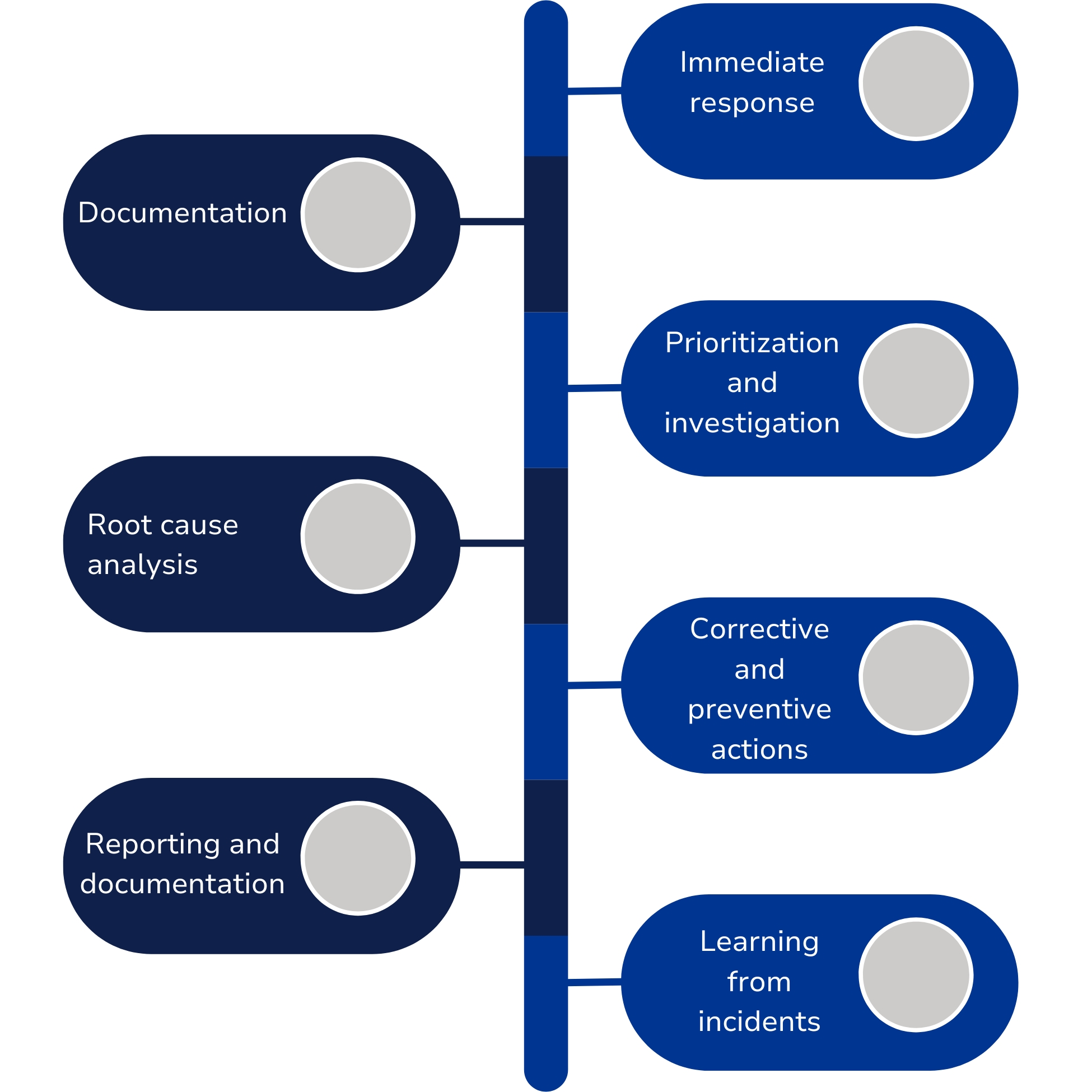Managing health, safety, and environment (HSE) incidents effectively is crucial for ensuring operational safety and improving performance for organizations that operate in high and very high-risk industries. Modern incident management practices, supported by advanced technology, can significantly enhance safety outcomes.
This guide outlines the best practices for handling every phase of incident management, from reporting and immediate response to investigation, documentation and corrective actions.
Phases of incident management
A well-organized incident management system forms the core of a successful HSE strategy. It ensures that incidents are promptly reported, investigated and addressed, reducing the likelihood of future occurrences. Key components of this system include clear reporting channels, tiered investigations based on severity and the identification of root causes. Implementing corrective and preventive actions is essential to mitigate recurrence.
Understanding and preparing for each phase of incident management is crucial for creating an effective safety management system.

Immediate response
Organizations must have a comprehensive emergency response plan tailored to different incident scenarios. Unplanned events can escalate rapidly, so quick and well-prepared action is critical. Predefined procedures should include securing the site, evacuating personnel, shutting down equipment, and taking measures to prevent further escalation. Emergency response teams must be trained and familiar with the procedures to ensure an effective response.
Documentation
Capturing detailed information as soon as an incident occurs is vital, as details can quickly become less clear as unforeseen events unfold. Record everything from the condition of equipment and personnel in the area to the presence of safety devices or personal protective equipment (PPE). Photograph the surroundings, noting factors such as weather, lighting and noise levels. This documentation forms the foundation for a thorough investigation and provides critical information that may not be immediately apparent.
Prioritization and investigation
Determining the level of investigation required for different types of incidents should be pre-established. Some incidents may only call for internal review by a line manager, while more severe cases will need external expertise. Advanced tools, such as DNV’s HSE software Synergi Life, can streamline investigations. Ensure that personnel are trained to use these tools in advance, so they can respond promptly when incidents occur.
Root case analysis
A balanced and objective approach to root cause analysis is essential for uncovering
the deeper, systemic issues behind incidents. The investigation team should look beyond immediate causes, avoiding simple conclusions like "failure to follow procedures," which may overlook more significant contributing factors. The focus should be on identifying systemic changes that can prevent recurrence. Synergi Life’s use of SCAT (Systematic Cause Analysis Technique) methodology helps trace incident timelines and discover underlying causes. Another valuable tool is barrier management (also known as the bow-tie method), which analyses the effectiveness or breakdown of safety barriers.
Corrective and preventive actions
Once root causes are identified, organizations must implement corrective and preventive actions to reduce future risk. The SMART model (Specific, Measurable, Action-oriented, Realistic, and Time-bound) is a useful framework for defining these actions. Clear accountability and deadlines for action items ensure they are effectively followed up.
Reporting and documentation
In some cases, a separate incident report may be required, based on organizational protocols. These reports should include a compilation of facts, a summary of findings and conclusions about the probable cause. Supporting documentation should be listed for future reference. It’s important that the report remains factual and avoids guesswork, as this maintains credibility. Including a timeline of events makes the report easier to understand and highlights the sequence of actions.
Learning from incidents
Incident management should focus on continual improvement. Each incident provides an opportunity to identify trends, which can then be addressed to reduce future risks. Sharing lessons learned from incidents is critical for building a proactive safety culture. Many industry platforms, such as Havtil, IMCA, OSHA, and CCPS, allow for the exchange of incident learnings. Internally, organizations should establish efficient methods for disseminating insights and ensuring they are integrated into daily operations.
Conclusion
Effective incident management is based on preparation, systematic processes and the right tools. A proactive approach ensures that incidents and near-misses are investigated thoroughly, leading to corrective actions that improve safety without focusing on blame. DNV’s Synergi Life incident management solution supports this approach by providing tools for identifying root causes, implementing preventive measures and fostering a culture of safety and transparency.

